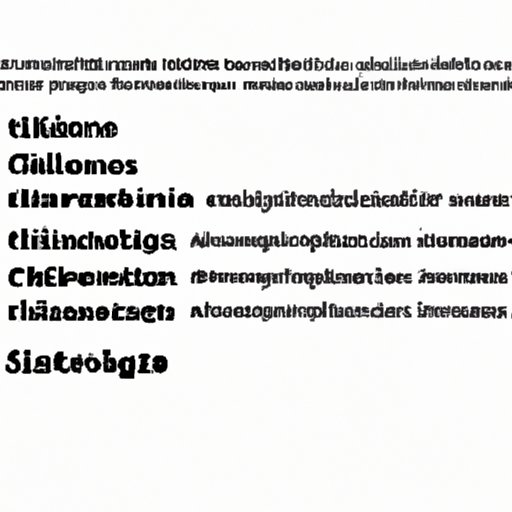
I. Introduction
When it comes to academic writing, citing sources is of utmost importance. Firstly, citing sources indicates that you have done your research and understand the topic. Secondly, it allows readers to find your sources easily and verify your arguments. The Chicago Manual of Style is one of the most widely used citation styles, particularly in humanities and social sciences. However, citing sources in Chicago style can pose certain challenges, especially for beginners. In this article, we will provide a thorough guide on how to cite sources in Chicago style.
II. General format of Chicago style citation
Chicago style citation usually employs footnotes or endnotes and a bibliography. Footnotes and endnotes are used to provide additional information or comments that the writer wants to include in the text without disrupting the flow. The citation information is then included in the footnote or endnote, which is numbered and marked with a superscript in the text. The bibliography, on the other hand, is a list of sources cited in the text and provides more detailed information about the sources.
To format sources in footnotes/endnotes and bibliography, different rules apply for different types of sources. For example, the format for a book citation is different from that of a journal article citation. Here are some examples:
Book: Author, Title of Book (Place of Publication: Publisher Name, Year), page number(s).
Journal article: Author, “Title of Article,” Journal Title volume number (issue number or date): page number(s).
In Chicago style, shortened citations are used for subsequent citations of the same source. Usually, the author’s last name and a shorter version of the title are used.
III. In-text citations in Chicago style
In addition to footnotes/endnotes, Chicago style also employs in-text citations. In-text citations are typically used for paraphrased information or when the source is referenced indirectly. The citation includes the author’s last name, publication year, and page number(s). Here is an example:
Paraphrased information: (Author’s last name Year, page number).
To cite a direct quote in Chicago style, the citation should include the author’s last name, publication year, page number(s), and the specific quote in quotation marks. For example:
Direct quote: “Quote” (Author’s last name Year, page number).
IV. Reference list in Chicago style
While the footnote/endnote and bibliography formats provide information about sources cited in the text, the reference list format provides more detailed information about the sources. The reference list is usually arranged in alphabetical order by the author’s last name or the title of the work. Here is an example of how to format a book citation in the reference list:
Author’s last name, First name. Title of Book. Place of Publication: Publisher Name, Year.
When formatting a citation in the reference list, use a hanging indentation. This means that the first line of the citation is left-aligned, while subsequent lines are indented.
V. Common mistakes and how to avoid them
When it comes to citing sources in Chicago style, there are several common mistakes that writers make. One of the most common mistakes is incorrect formatting of citations, such as omitting important information or using the wrong punctuation. Another common mistake is incorrect use of in-text citations or shortened citations. In order to avoid these mistakes, it is important to double-check your citations, use reliable resources, and follow Chicago style guidelines carefully.
VI. Quick reference guide
Here is a quick reference guide to some of the most important features of Chicago style citation:
| Type of source | Footnote/Endnote format | Bibliography format | In-text citation format |
|---|---|---|---|
| Book | Author, Title, page number(s). | Author’s last name, First name. Title of Book. Place of Publication: Publisher Name, Year. | (Author’s last name Year, page number). |
| Journal article | Author, “Title of Article,” page number(s). | Author’s last name, First name. “Title of Article.” Journal Title volume number (issue number or date): page number(s). | (Author’s last name Year, page number). |
VII. Conclusion
Citing sources in academic writing is crucial, but it can be challenging, especially when using a specific citation style like Chicago style. In this article, we provided a comprehensive guide on how to cite sources in Chicago style, including examples and tips on common mistakes to avoid. We hope that this article will serve as a valuable reference for writers who need to cite sources in Chicago style.
For additional resources on Chicago style citation, consider consulting online tutorials or style guides. With practice and attention to detail, you can master the art of citing sources in Chicago style.




